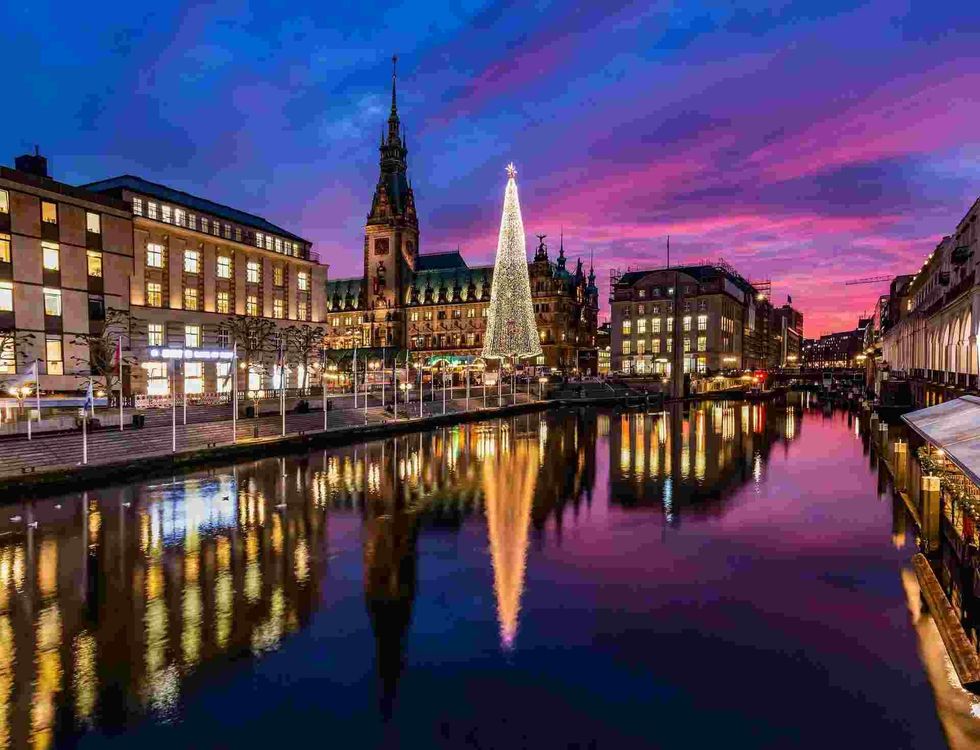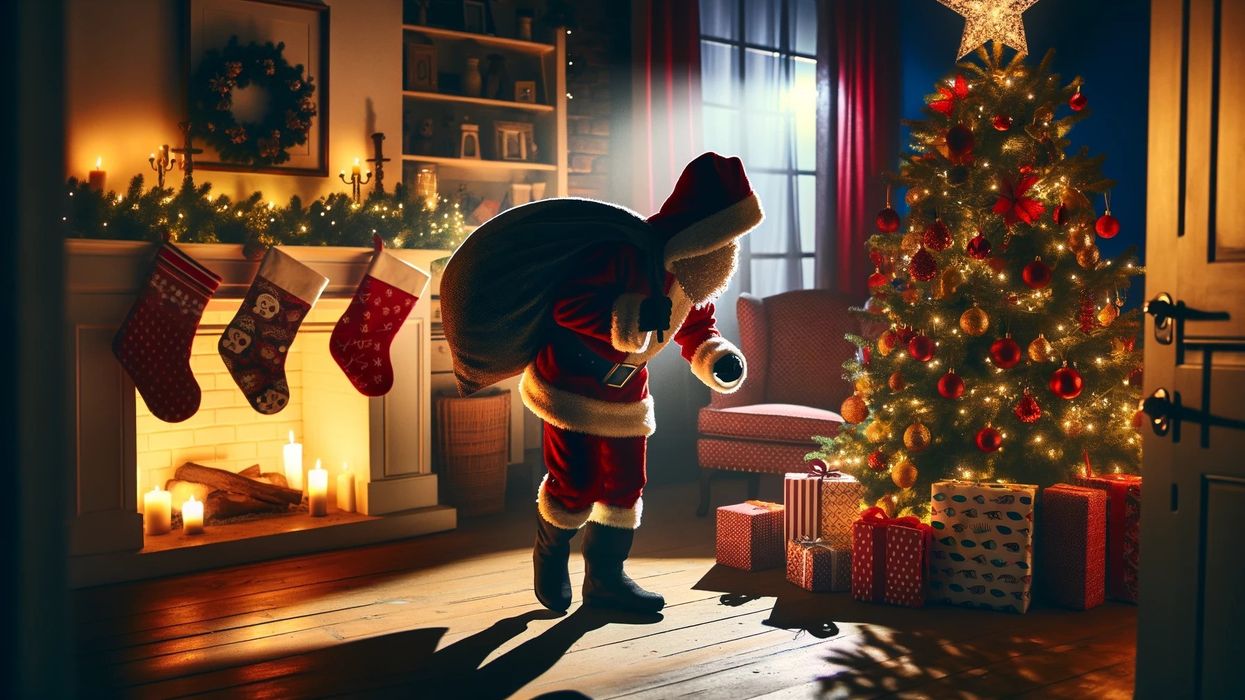Christmas is a widely celebrated festive season with different significances and decorations.
However, the foundation of this festival is the birth of Jesus Christ on December 25. Christmas Eve in German-speaking countries like Germany, Switzerland, and Austria is known as Weihnachten.
This tradition is also popular in other German-speaking minorities like Eupen of Belgium, Transylvania in Romania, South Tyrol in Italy, and other German-American and German-Brazilian communities. Weihnachten traditions have influenced Advent culture and Christmas across the world.
Many families celebrate Advent as they prepare for Weihnachten. These religious preparations are for welcoming Christ (das Christkind).
Advent calendars have 24 doors, and young children enjoy the festive season as they open one door after another in December until Christmas. They will often receive treats or Christmas-related photos within these doors.
Nikolaustag is celebrated on December 6 to commemorate Saint Nicholas in many European countries, including Germany. Some Christmas symbols used for decorations are snowflakes and snow, evergreen boughs, a Christmas tree or Tannenbaum, stars and candles, and mistletoe.
Families enjoy the snow during the Christmas season by creating a snowman. Teenagers and children dress up as the three wise men on January 6 and go from one house to another, praying, singing, and blessing the house, and collecting money for any good cause. Local catholic churches organize these little singers.
If you enjoy reading these facts about German Christmas symbols, then make sure to read some more interesting facts about the origin of Christmas colors and Christmas in Ireland here at Kidadl.
What are the typical Christmas decorations in Germany?
The typical Christmas decorations in Germany include fir trees or pine trees, Christmas pyramids, nutcrackers, Raucherman, gingerbread houses, Christmas tree ornaments, Hummel figurines, Advent wreaths, and Christmas windows.
Although Christmas does not originate from Germany, many traditions like decorating trees started there. As the Christmas holiday season approaches, Christmas trees and decorations create the ambiance needed for Christmas celebrations.
Many of us have heard about the popular nutcracker ballet, but only a few of us actually know about its history. These wooden soldier designs were first made around 1800, near the Erzgebirge and Sonneber areas of Germany.
However, the first-ever nutcracker produced for commercial purposes was made by Wilhelm Fichtner in 1872, and he is also known as the 'father of the nutcracker.' German smokers or Raucherman are also made in a similar way but for a different purpose.
These toys serve as incense burners. Raucherman came into existence in 1648 in Germany after 30 years of religious war ended.
It is believed that these smokers got their name due to the superstition that Raunaechte's evil spirits came out in the longest of nights and were scared of sound and light. Hence, incense is burnt after the spirits go away.
Figurines are used in a nativity scene. A nativity scene is a depiction of the birth story of Jesus Christ.
Figures of Mary, Joseph, the Angel of annunciation, three wise men from the Magi, a donkey, an ox and baby Jesus are used in these scenes. This setup may often contain electric lights. A Christmas tree is also an important element, with glass ornaments like glass balls, tinsel, stars, and other decorations used to make it look festive.
You can use wax candles instead of lights. You can place a holy advent wreath on the main table.
Christmas Traditions Only Germans Will Understand
German Christmas traditions in Germany include Saint Nicholas day, Advent calendar, Krampus night, Advent wreath, Ephiphany, singing Christmas carols and other Christmas songs, mulled wine, Christmas markets, Lebkuchen, Christmas stollen, and Christmas angels.
German Christmas traditions in German culture are quite different from the rest of the world. Christmas celebration starts on Christmas eve (December 24) with exchanging Christmas gifts.
On Christmas day and the next day, families celebrate together, with many Christians attending mass. The Advent season starts in early December.
St. Nicholas day is an exciting day for kids as they leave their clean boots outside their homes and wake up to boots filled with small gifts, candy, and nuts from St. Nicholas. St. Nicholas also makes an appearance in many public places.
Santa Claus is also popular, but St. Nicholas holds more significance than in other parts of the world. St. Nicholas is commemorated in many other countries too. The devil, called Krampus, is a sidekick of St. Nicholas.
He teaches naughty children a lesson, and some also dress up in costume. The advent calendar is an important part of the Christmas countdown.
Children open a window in an Advent calendar to find small gifts, candies, or poems. You can buy an Advent calendar in stores or make one of your own.
In the 16th century, German Lutherans started one of the Christmas traditions called the Advent wreath. You can make an Advent wreath by placing four candles in a bed consisting of dried flowers, berries, Christmas ornaments, and pine cones. This tradition also differs between different families.
Some might burn a candle every week until Christmas day, while others will sit around the wreath on Christmas eve and the next few days and sing Christmas carols. The tradition of Christmas markets has spread around the world. Christmas markets were first found in German-speaking Europe around the Middle Ages.
A number of Christmas markets are held in Germany in a year. Mulled wine is an essential part of Christmas celebrations.
It beats the winter cold while spreading festive cheer. Another type of ornament is Christmas angels. The Christmas spider is associated with the German Christmas, which requires the use of tinsel.
The German Christmas Tree
The German Christmas tree is called Tannenbaum, which are evergreen trees like a spruce tree or fir tree.
The credit of starting the Christmas tree tradition in Germany is often given to Martin Luther. However, the first recorded appearance of an evergreen tree as a Christmas tree was many years after Luther died. This was recorded in Strasbourg, Alsace.
The German Christmas tree probably dates back to around the 1500s. This custom spread out of Germany in other European countries and England with the help of German royals. Many immigrants spread this custom across America.
The Swiss, Germans, and Austrians use electric candles for decorating their trees. However, many people in Germany still use real candles safely. The evergreen tree symbolizes everlasting life.
People add candles, glass balls, tinsel, stars, ornaments, and other decorative items to their trees. Before Christmas day, it is believed that Jesus Christ will bring gifts to kids while they sleep. A family decorates the Christmas tree together.
The symbols of each ornament represent different meanings. A bird is a joy, an angel is god's guidance, a pine-cone is fruitfulness, a fish is Christ's blessing, a fruit basket means generosity, the flower basket is good wishes, a rose is affection, and a rabbit is hope.
A house represents protection, a heart means true love, a teapot is hospitality, and Santa means goodwill. The German Christmas tree stays up until January 6, which is the 12th day of Ephiphany or Christmas.
Christmas in Germany is more than just a two-day celebration. Also, people are allowed back to work after December 27.
Traditional Christmas Foods In Germany
Traditional Christmas foods in Germany include gingerbread, Christmas cookies, Christmas stollen, and Findu.
Food is a huge part of the Christmas celebration and festive season. A few food items on the Christmas menus are quite similar to ones around the world.
However, there are also plenty of unique ones. Food has also changed over time with better quality and taste. Authentic Carp, or Karkfen, is a traditional fish baked and served along with steamed rice and boiled potatoes.
Christmas stollen is a dry cake that is shaped like a loaf of bread. Heart-shaped gingerbread or Lebkuchen comes in varying sizes and shapes with different toppings.
Christmas cookies vary in taste around Germany. Traditional star-shaped cinnamon cookies are called Zimtstern, and spicy Christmas cookies are called Spekulatius.
A Christmas goose is prepared like a turkey on thanksgiving, stuffed with red flavored sauce, potato dumplings, and red cabbage. Two types of fondue are prepared: meat fondue and cheese fondue. Raclette is a frying cheese with lunch meat on small pans.
These pans are placed on a small stove on the table. Potato salad and sausage are a fast Christmas recipe of any type of potato salad usually served with smoked sausage.
A delicious Christmas cake in Germany is the stollen. This cake is made with candied, chopped, or dried fruit, flour, spices, and nuts. Powdered sugar is sprinkled on top and sometimes zest too. Fish in other forms, like herring, salmon, or hake, are common food.
Chestnut fillings or apple sausages are also common. Seasonal desserts are usually flavored with spices like cloves, cardamom, cinnamon, and orange. An advent calendar containing candies is quite popular around Germany.
Here at Kidadl, we have carefully created lots of interesting family-friendly facts for everyone to enjoy! If you liked our suggestion for the 'German Christmas symbols', then why not take a look at 'Christmas in Russia facts' or 'Facts about Christmas in England'?








